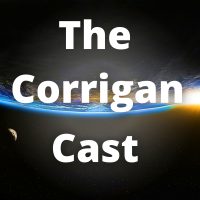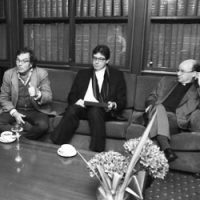
[Listen to an audio version of this blog entry here.]
Friday the 13th. Considering all that’s happened since, some superstitious types — not me, I hasten to add — might deem it quite portentous that this was the date of the initial, tentative encounter that would prove to be so life-changing.
The month was February, the year 2009. One day before my 24th birthday as it just so happened to be.
Bothersome beginning
To what do I refer? The first time I set foot in Bogotá. My Bogotá beginning, so to put it.
I still recall quite vividly those early, uneasy moments in the city. Were they signs of how my complex relationship with the place would develop? Maybe.
After getting a rather pleasant introduction to provincial Colombia in the small city of Popayán in the south, the nation’s capital was the next stop.
Emboldened following three-and-half months of solo travelling around South America — somewhat paradoxically, the few unsettling incidents along the way appeared to boost my confidence, not diminish it — arriving in Bogotá I took a public bus rather than a taxi from the main transport terminal to the centre.
Stepping off this bus on Carrera Cuarta (Fourth Street) with Avenida Jiménez I went in search of my accommodation, the-then quite new The Cranky Croc hostel (it’s a Bogotá institution now). Using a map on the back of a business card from the hostel as a guide — smartphones and Google maps weren’t really a thing then — I figured it would be simple to find.
‘After various inaccurate directions from friendly-but-unhelpful locals, I finally found my bearings and located my lodgings.’
In fact, I was just a block and a half away from it but Avenida Jiménez disorientated me a bit. Those damn diagonal streets. They can play havoc with an otherwise easy-to-navigate grid system.
So whilst impressed with Bogotá’s physical setting as I wandered for about an hour trying to locate The Cranky Croc, I started to feel like I was having a Nightmare on Elm Street experience.
Mildly intimidating «greetings» from a few «undesirables» didn’t help either. Carrying about 20 kg on my back and tired after a long overnight bus journey, I was feeling a little vulnerable.
After following various inaccurate directions from friendly-but-unhelpful locals, I finally found my bearings and located my lodgings.
Once settled and having befriended two dormitory companions, we headed out that night — to celebrate my imminent birthday of course. While I didn’t know it at the time, we went to the swanky Zona T. Oh how my social life has changed in the intervening period!
In a club there we met a group of, um, friendly women originally from Bucaramanga. It was largely down to these ladies that saw me enticed back to Bogotá a couple of years later. (Subsequent returns and my final decision to live in the city had much less to do with them.)
Losing the centre
The story behind Elba, Paola and Sandra is one for the memoirs. Or at least for another time. For it’s those first, arguably ominous impressions of Bogotá, specifically its historic centre, that I want to focus on here.
Like many foreigners who come to live in Bogotá, the centre was where I initially settled. While it wasn’t really ugly when I first visited over 13 years ago, it’s certainly more aesthetically pleasing today following a few facelifts and the construction of some architecturally impressive buildings. It’s shedding that dreary 1980s industrial look that darkened it back in 2009.
‘I disliked the university ambience before these centres of learning became fully dominated by bearded lefties, of both the male and female variety.’
Yet, despite — or perhaps because of — living in the centre for almost four years, I remain at best indifferent to it. At other times, I’ve more of a hostile feeling towards it. I seldom view it in a positive light.
On the rare occasions I return there — being 20 km away doesn’t help to encourage one back — I’m reminded of this mild aversion.
Why this is, I’m not entirely sure. One thing, though, is the fact that compared to other parts of the city it’s very difficult to shake off the tourist label in the centre. That’s because, obviously enough, it gets lots of tourists passing through. So somebody of my origin tends to be seen as just another passerby.
OK, I always will be a foreigner — a gringo if you will, although be careful calling me that to my face — in Colombia.
Yet in my beloved Barrio Santandercito at least I sense that I’m part of a community. I never really got that feeling in the historic centre. (I did get it to a certain extent in La Perseverancia — a barrio in which I never actually lived, only socialised — but on recent returns there I’ve noticed that irritating tourist vibe creeping in. The renovated food plaza appears to be the «culprit» for that.)
Another factor for this negativity towards Bogotá’s centre is due to its being a university hub. There’s just something about the university environment that irks me. And this was the case before they became fully dominated by bearded lefties, of both the male and female variety.
Little wonder, then, that I felt more at ease in the centre around Christmas time, when the universities were on holiday. For the record, shocking as this may be, there’s not much of a university ambience in Santandercito.
It could be said that what all this adds up to is that I don’t particularly like big cities. Yes, I do live in one, but my base in Bogotá’s far north has, in some ways, more of a small-town feel to it.
It’s this, Bogotá’s barrio beat, that I move to. And as much as it might be good for me to escape from it, at times it feels that I’m wedded to it for life.
So perhaps it’s this, and not my inauspicious introduction, that is the true «curse» of that fateful first visit to the city on Friday the 13th of February 2009. I, however, don’t do superstition.
_______________________________________________________________
Listen to Wrong Way’s Colombia Cast podcast here.
Facebook: Wrong Way Corrigan — The Blog & IQuiz «The Bogotá Pub Quiz».






Comentarios